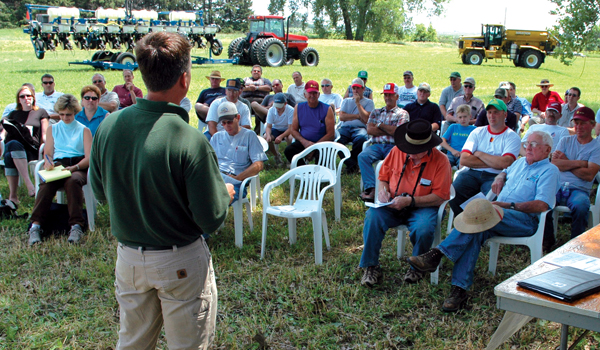Agriculture and the Modern World | Farmer Bob's Parts
Posted by Bobby the Farmhand on Dec 2nd 2020
The Disconnect Between Agriculture and the Modern World
At a recent national meeting of state departments of agriculture, “there was a lot of talk about tough times in agriculture” — budget cuts for farm programs and research, USDA office closings and consolidations, rising costs of inputs, increasingly onerous regulations, says John Campbell, director of Mississippi’s Bureau of Plant Industry.
“But in next breath,” he says of the conference headlined by Secretary of Agriculture Tom Vilsack, “they were talking about our growing world population and how, by 2050, there will be 9 billion people on the planet who will need to be fed and clothed by agriculture.”
And says Campbell, who later spoke at the annual meeting of the Mississippi Agricultural Consultants Association at Mississippi State University, there was much discussion by the officials about the increasing disconnect between boots-on-the-ground agriculture, the consumer public, and those who write farm programs, enact rules and regulations, and devise budgets.

“Among issues that resonated most with those in attendance,” he says, “are the constantly proliferating regulations affecting agriculture and the costs of complying with those regulations, and a consumer public that is increasingly unaware of how its food and fiber are produced or the role that farmers play in that production.
“Most citizens today are three generations removed from the farm — they don’t know where their food comes from, and they don’t understand the importance of agriculture and agricultural research, or why money needs to be spent to maintain our agricultural infrastructure.

“There was an article recently that got national attention about the most useless college degrees. Agriculture was ranked No. 1, animal science was No. 4., and horticulture was No. 5. [See the complete listing at http://education.yahoo.net/articles/most_useless_...
“Somehow,” Campbell says, “we’ve got to bridge this gap and make the public understand that money must be put forth in our industry to get the research and products we need to make farmers profitable. Land area isn’t going to increase — in fact, to feed those 9 billion people, we’re going to have to produce even more on the same or fewer acres.”
At the same time, he notes, fewer young people are choosing agriculture as a profession. “The average age of the American farmer now is 59, and the cost of entry for new farmers is high.”

In his own agency, Campbell says, there has been about a 20 percent staff reduction over the past 18 months due to retirements. “These people took 150 years of institutional knowledge with them; the plant pest division took the biggest hit, with 70 years of experience lost.”
Agriculture remains a key sector in Mississippi’s economy, Campbell says, with about 25 percent of the state’s work force directly or indirectly related to agriculture. Poultry is the No. 1 ag industry, at $24 billion, followed by forestry, soybeans, and cotton.


